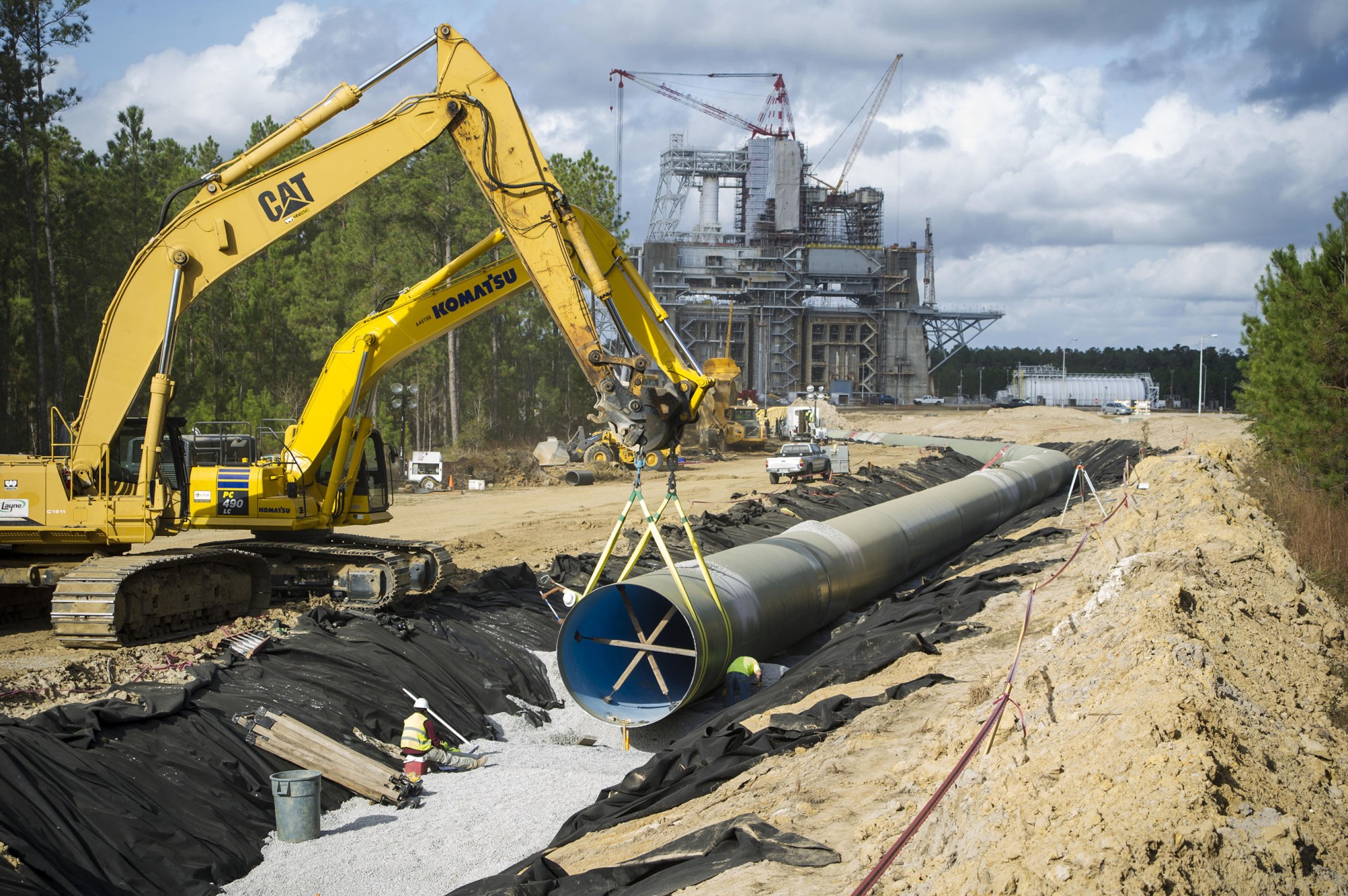The average household faucet flows about two gallons of water per minute through a half-inch pipe. Imagine the pipe it would take to flow 335,000 gallons per minute.
That is exactly the “faucet” NASA will use to supply needed water for testing the core stage of its new Space Launch System at Stennis Space Center. Work is under way to replace and upgrade the 50-year-old high-pressure industrial water system at the center to ensure its capability. The Center Operations Directorate project managed by NASA engineer Karma Snyder is a mission critical effort to replace full sections of large piping, as well as several large gate valves. An additional pump also is being installed to help increase water flow for testing the SLS core stage. NASA is developing the SLS vehicle to carry humans and other payloads deeper into space than ever.
Water is a critical element for rocket engine testing. At Stennis, engines are anchored in place on large test stands and fired just as they are during an actual space flight. The fire and exhaust from the test is redirected out of the stand by a large flame trench.
Testing of the SLS core stage on the B-2 Test Stand at Stennis will involve a lot of fire and exhaust as four RS-25 engines are ignited simultaneously, producing more than 2 million pounds of thrust. A water deluge system will direct much of the 335,000 gallons of water flowing to the stand every minute to cool the exhaust.
In addition, about 87,000 gallons of water a minute will be used for vibro-acoustic suppression, essentially creating a curtain of water around the engines to dampen the loudness of the test and protect the core stage from noise damage. Water also must be available on the stand and to the adjacent barges – which supply cryogenic rocket propellants to fuel the engine during the test – for fire suppression in the event of a mishap.
In the early days of testing during the 1960s and 1970s, well water was pumped to the stands to meet those needs. In the 1980s, water began to be diverted from the nearby manmade canal system into a 66-million-gallon reservoir. Large pumps deliver the water from the reservoir to the test stands through underground pipelines.
Those pipelines have degraded with age. The 96-inch-diameter line from the reservoir to the B Test Complex is being replaced. Work on that phase will be completed by summer 2015, which means it will be in place in time to support testing of the SLS core stage the following year. The HPIW project also involves replacing a portion of line servicing the A Test Complex and several 66-inch gate valves used to control water flow. Completion of that work is scheduled in 2016.
The new piping is fabricated from carbon steel and includes inner and outer linings that will help protect it from corroding elements. The new gate valves also represent a material and design upgrade for the system.
The original Stennis system was built to deliver more than 300,000 gallons of water a minute at 300 psi. The system had to be upgraded to enable additional water flow needed for the SLS core stage. A pump is being added that will increase flow by 25,000 gallons a minute. “Vibro-acoustic suppression was something we had not originally planned for,” explained Rick Rauch, who is managing renovation work on the B-2 stand to prepare it for SLS core stage testing.
In addition to installing equipment needed for vibro-acoustic suppression, the configuration of flame trench holes to deliver water during testing had to be redesigned to optimize flame deflector cooling. It is no small task, involving more than 32,000 holes that must be plugged and re-drilled to form a new spray pattern tailored to the core stage rocket exhaust plume.
On test day, the “faucet” will be turned on, and water will flow. The average American household uses about 100,000 gallons of water, inside and outside use, each year. During an SLS test, the B-2 Test Stand will use that much water every 18 seconds.
For information about Stennis Space Center, visit: https://www.nasa.gov/centers/stennis/.
Valerie Buckingham
Stennis Space Center, Miss.
228-688-3898
valerie.d.buckingham@nasa.gov




























